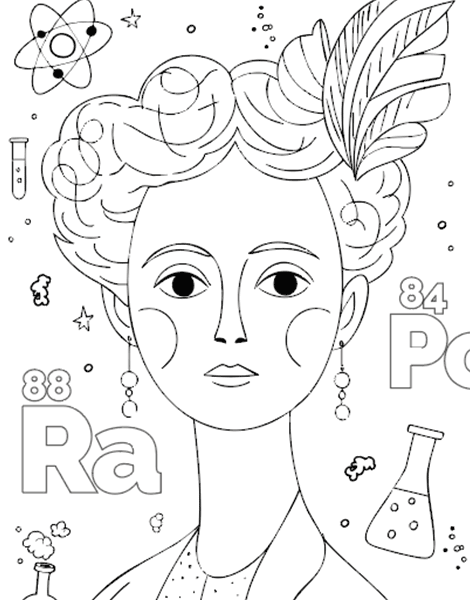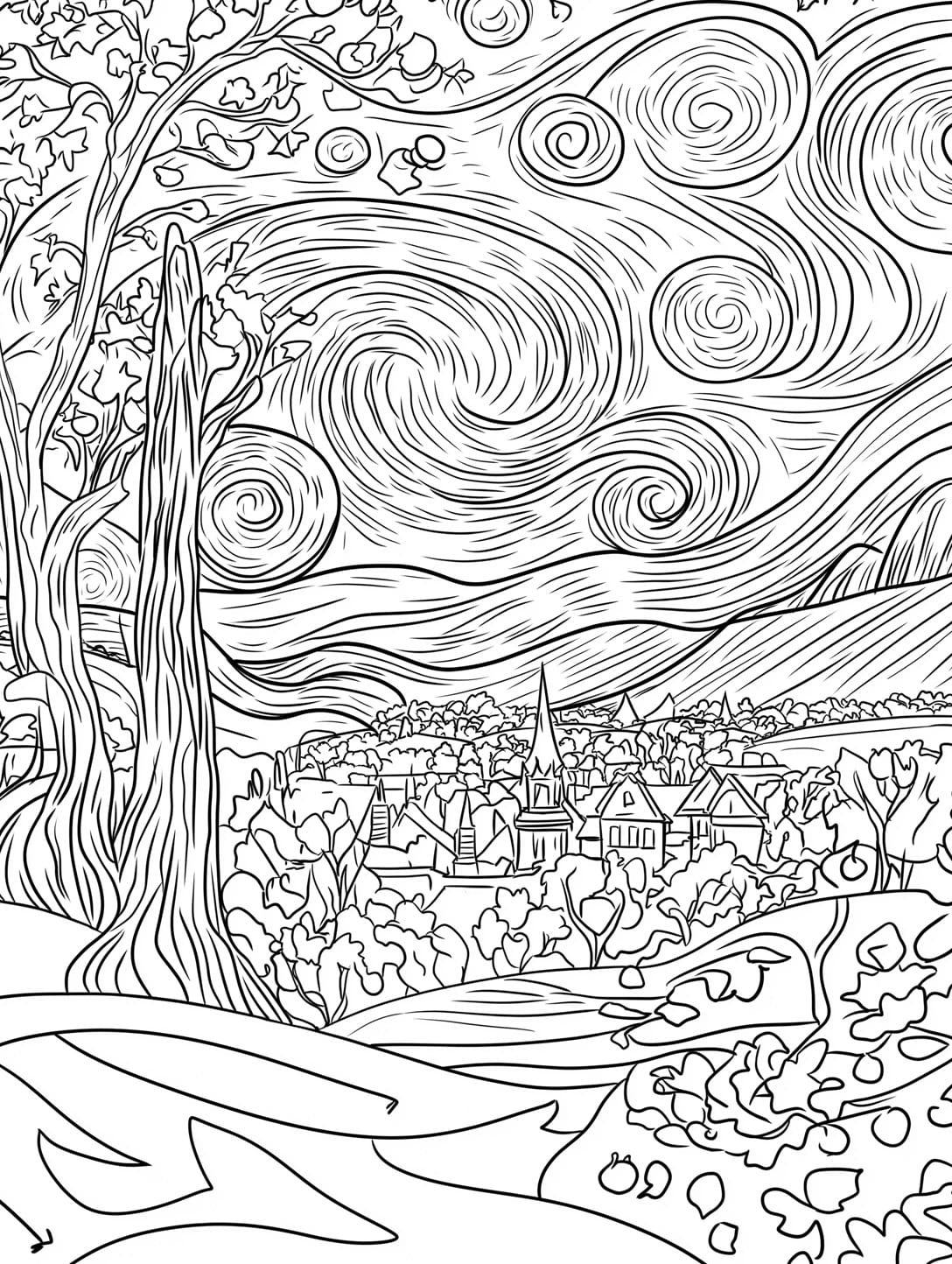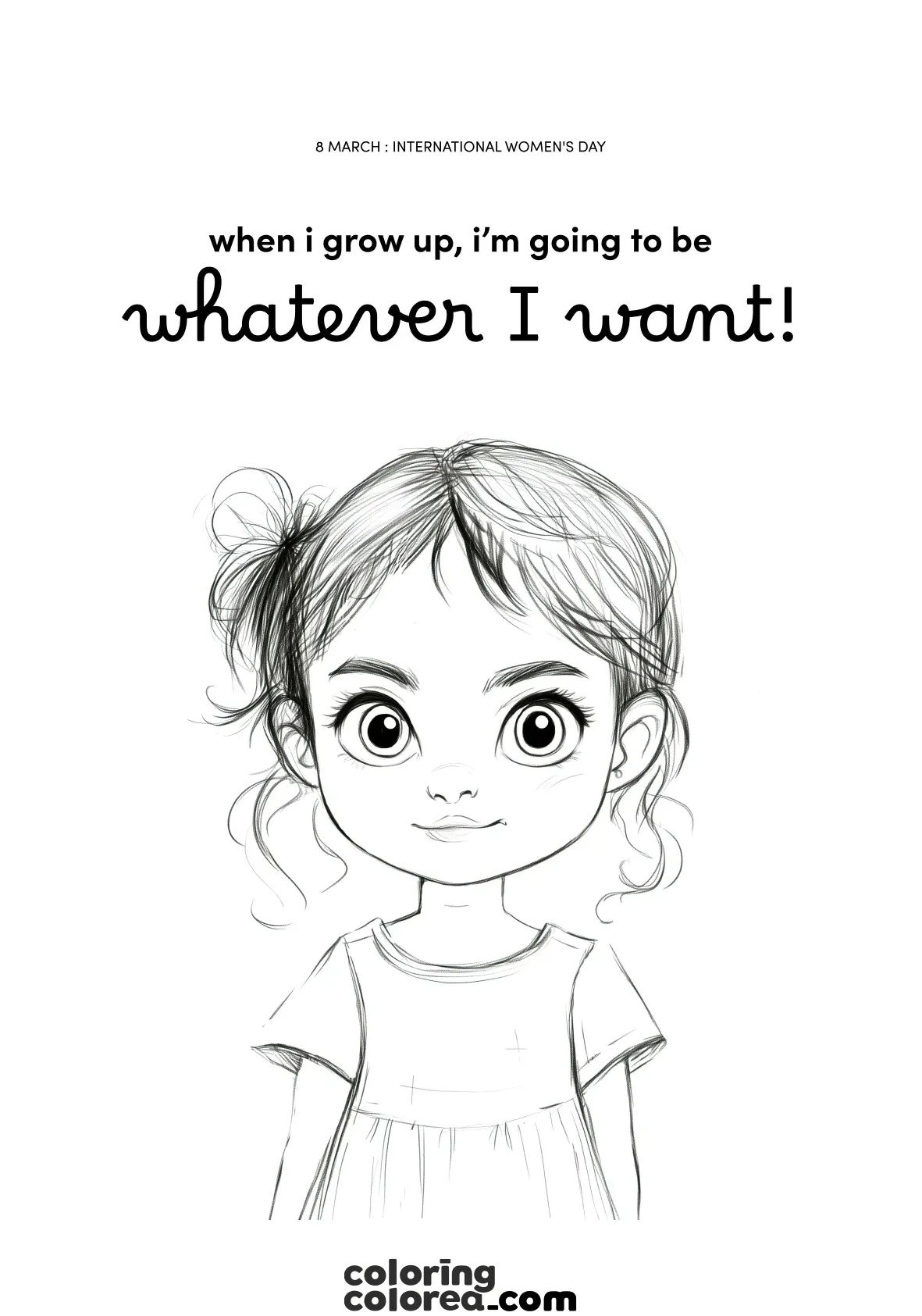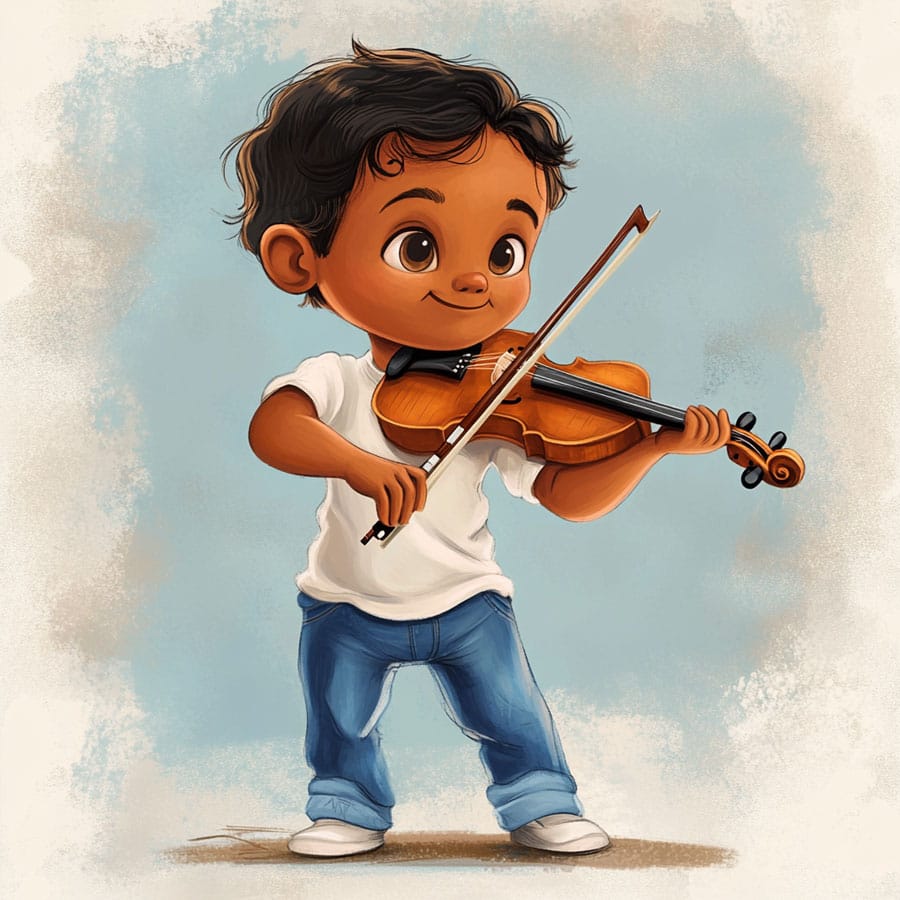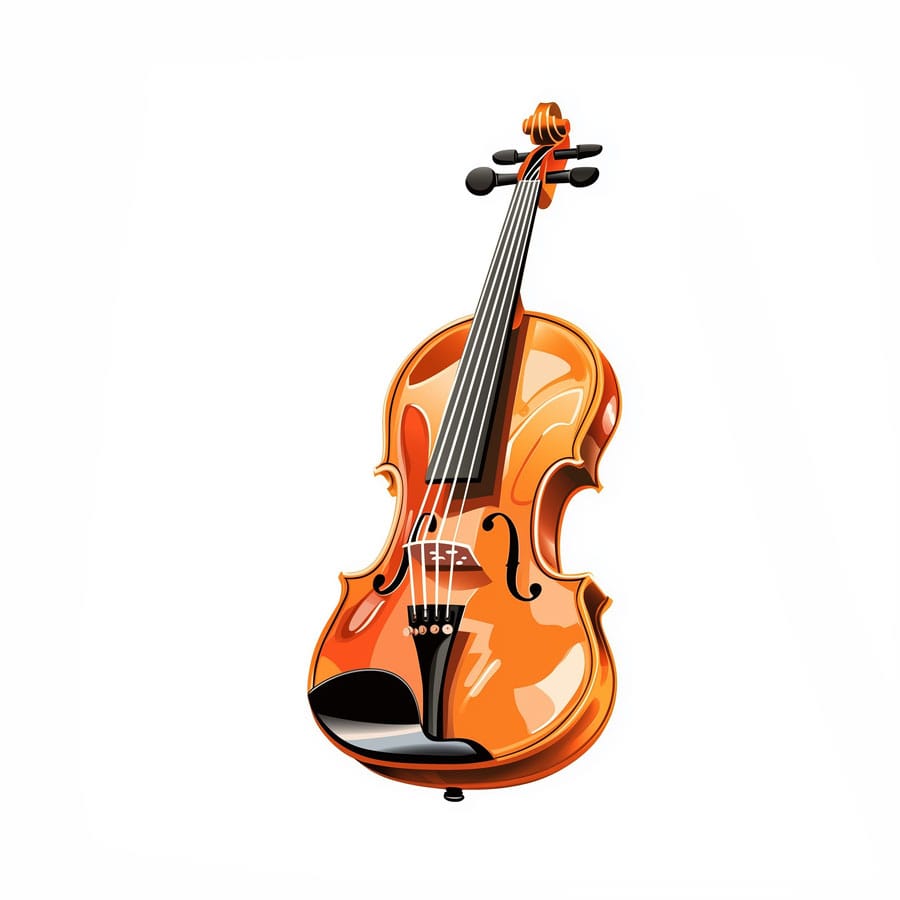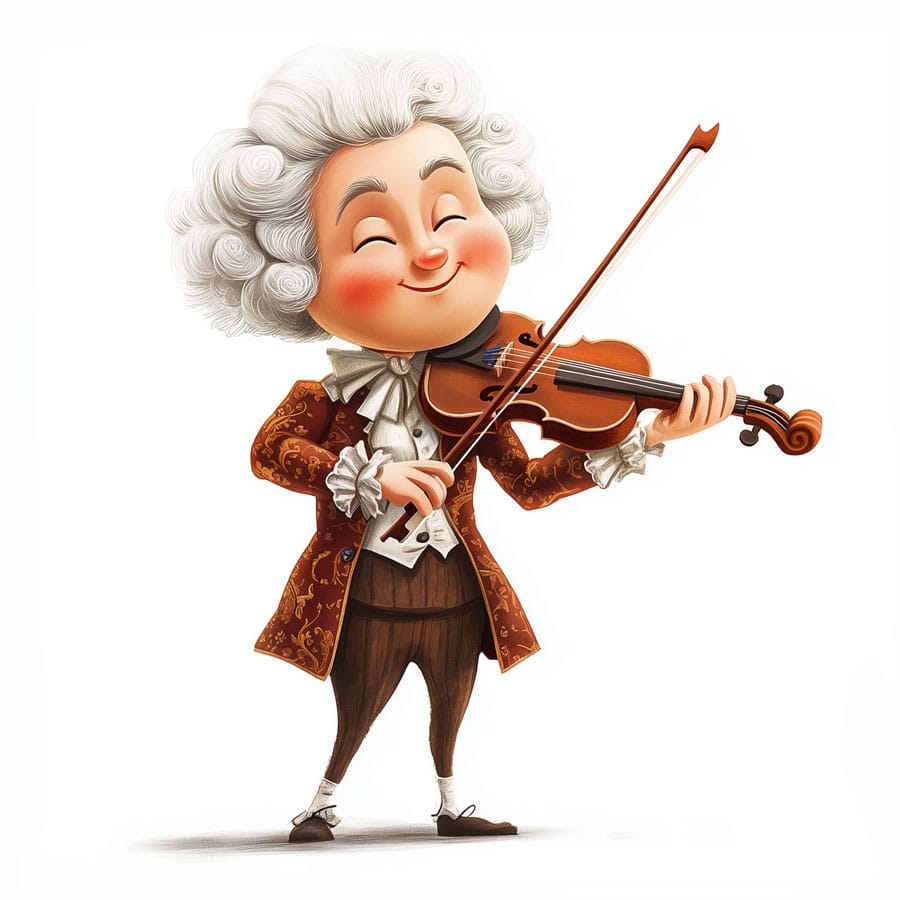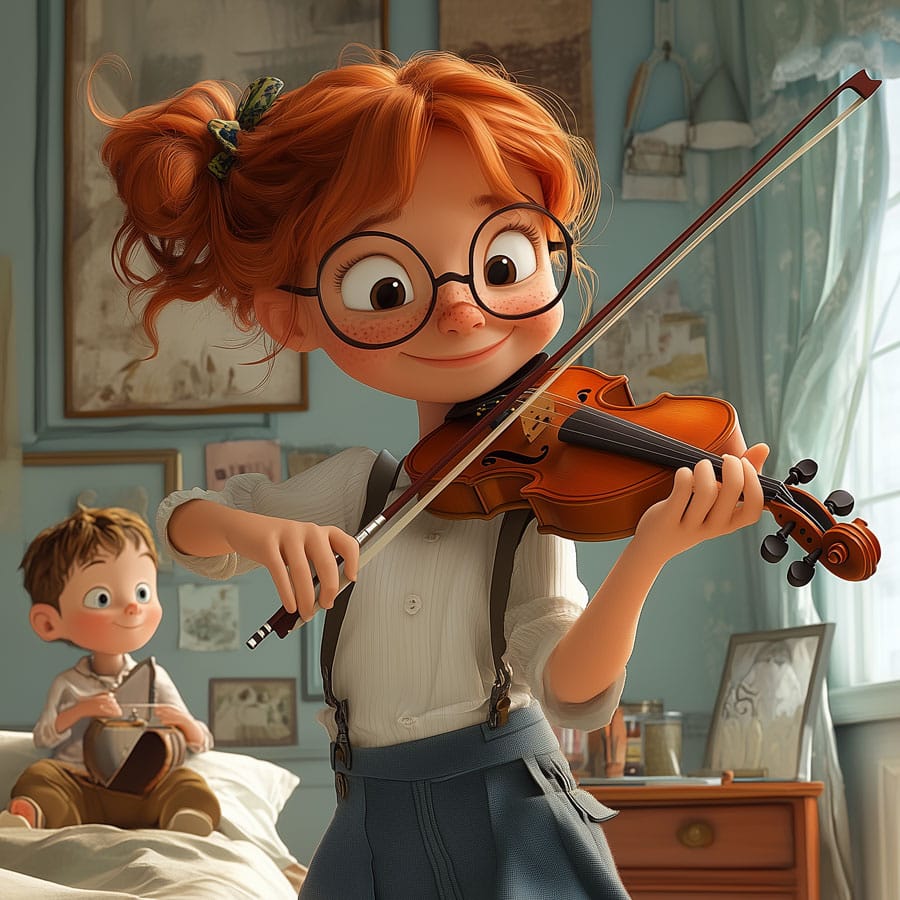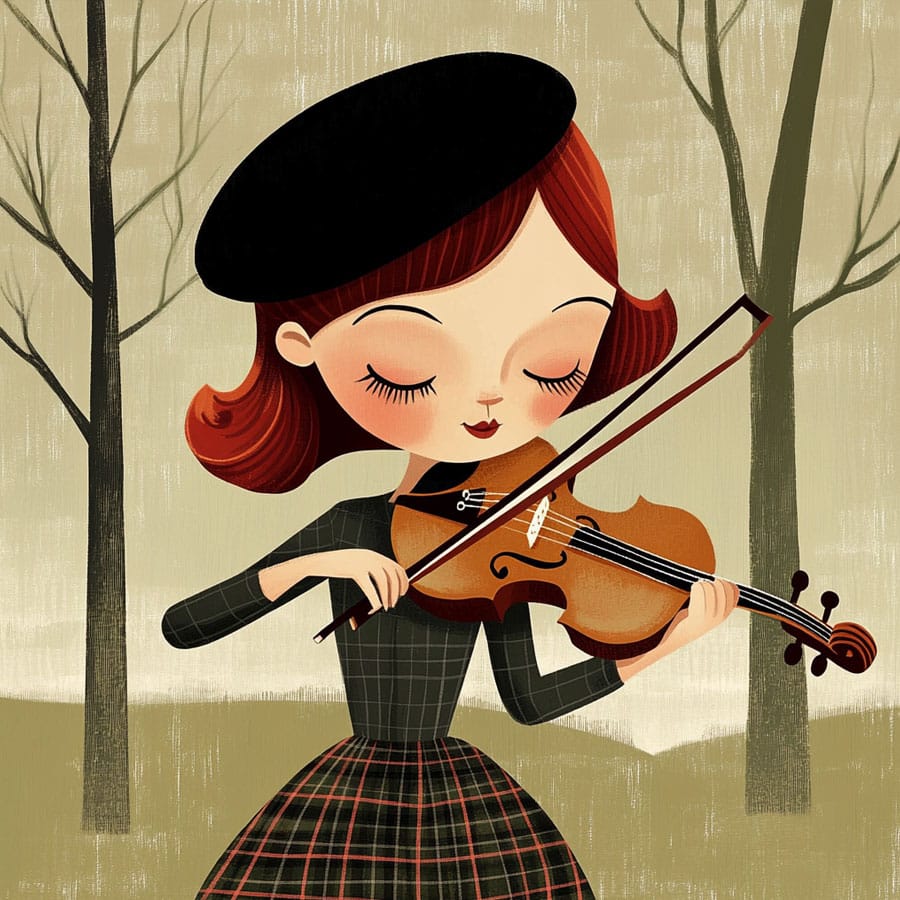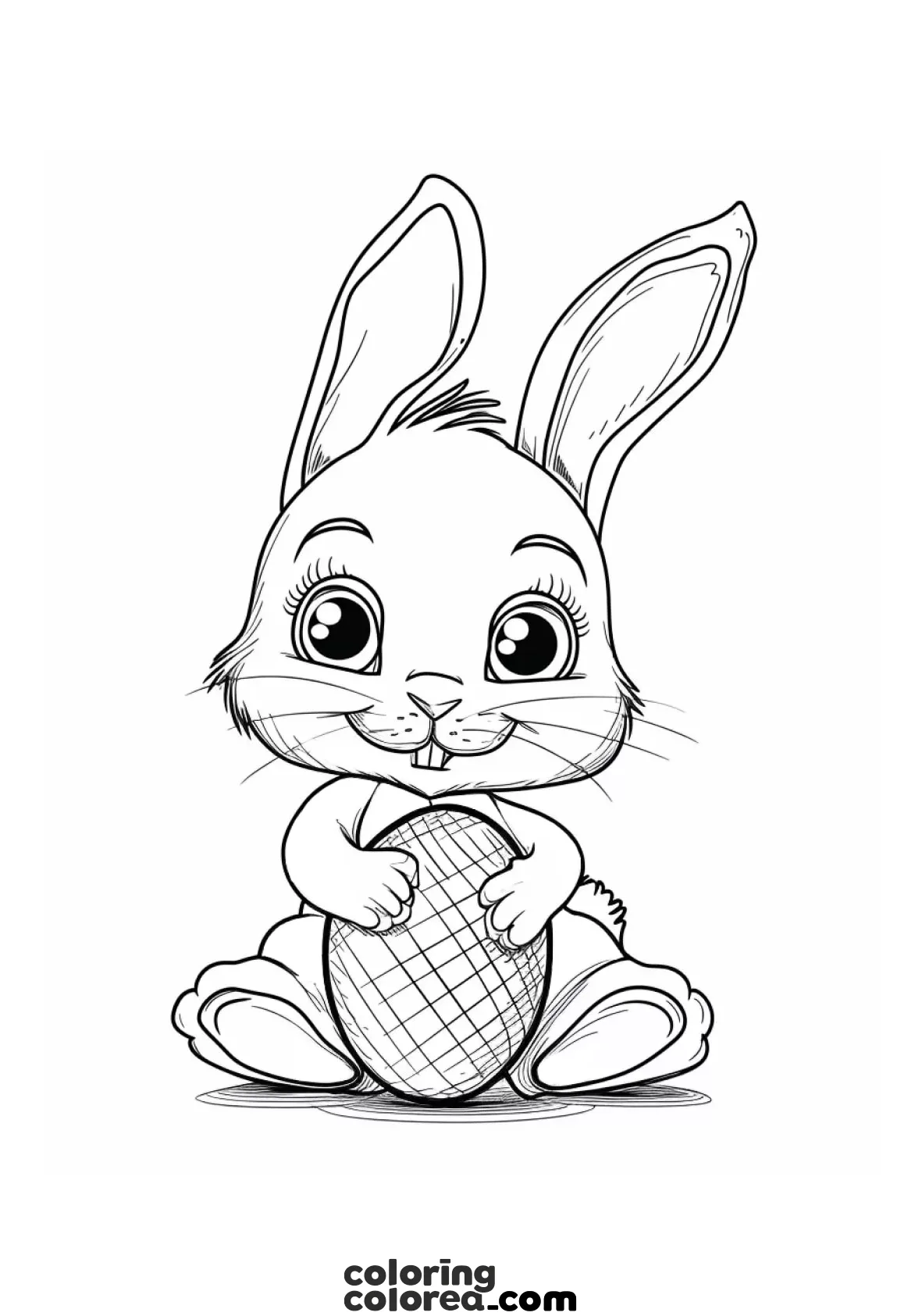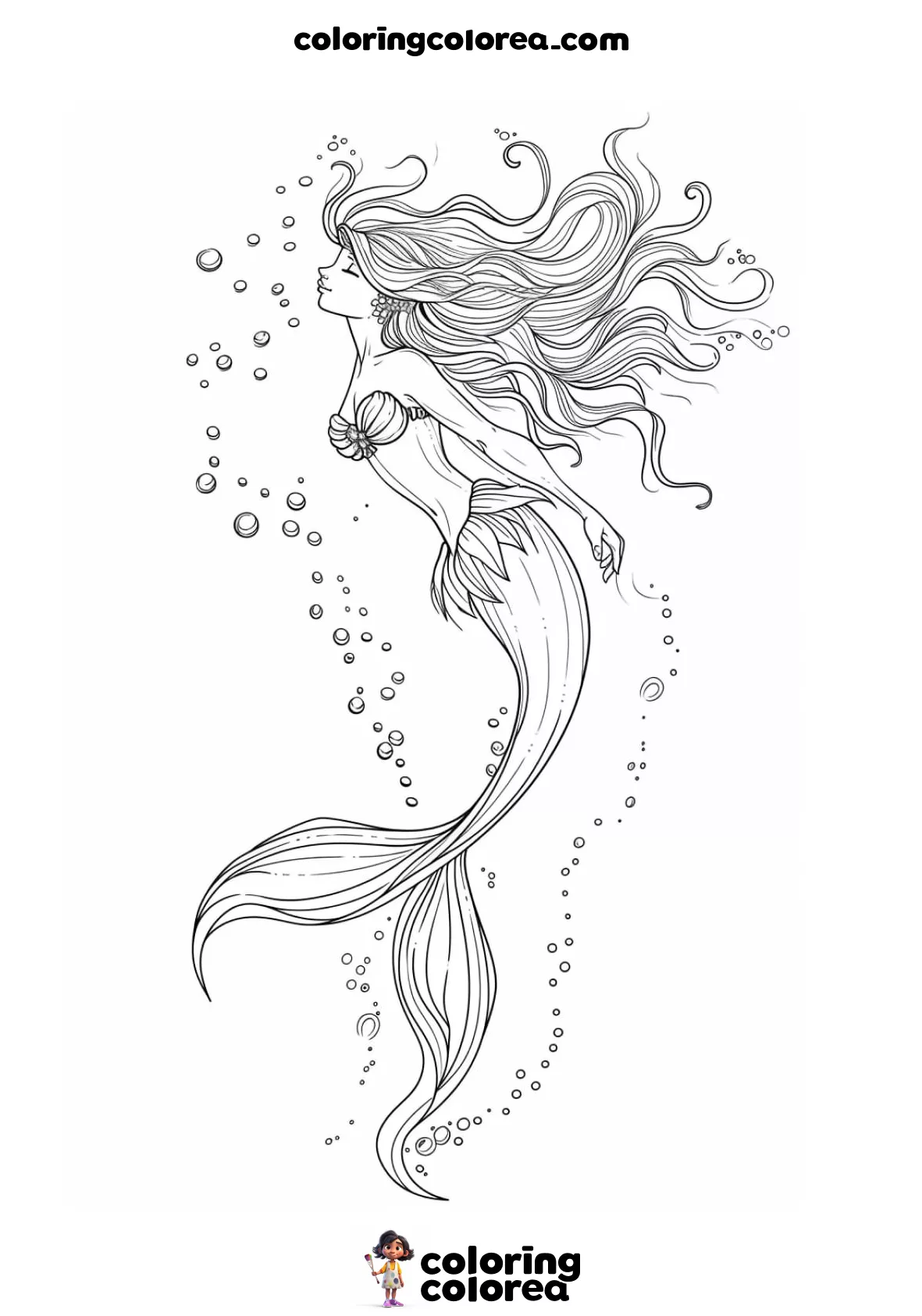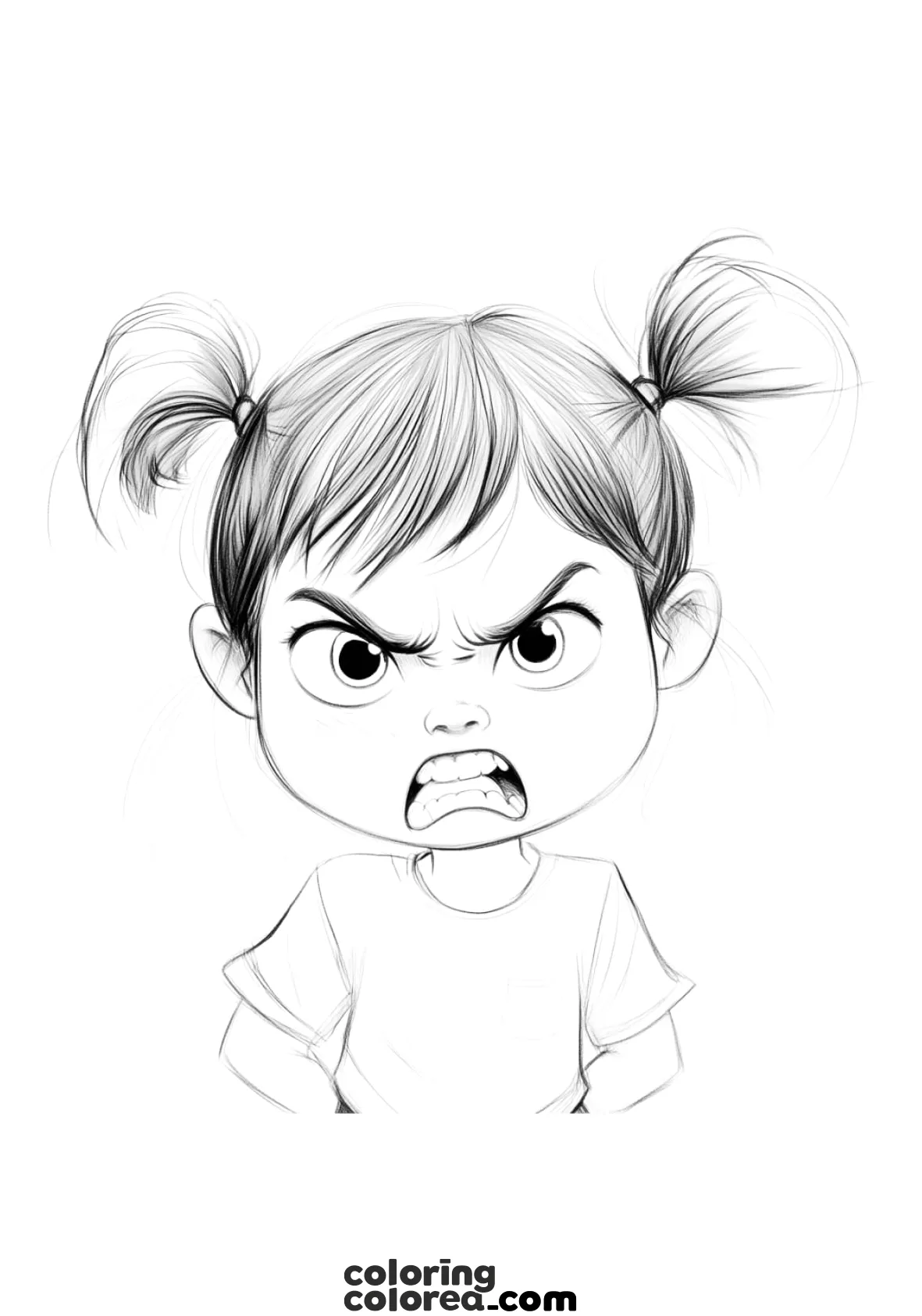Ideas and tips for colouring the violinist and his violin
Start with the hair: choose natural tones like black, brown, blonde, red—or go wild with creative colors like blue, green, or purple. Add volume by shading the base with a darker tone and highlighting the top with white or an eraser.
For the skin, use any tone that fits your vision: deep browns, caramel, golden tones, beige, peach, soft pink—or even fantasy colors. Shade gently under the neck, on the arms, and on the side away from the light to create depth.
The sweater and pants are a chance to show personality—use complementary or contrasting colors like green and orange, blue and yellow, or earth tones. Add shading in folds and where the clothes touch the body.
The violin looks great in wood tones like reddish brown, toasted orange, or light brown. Simulate the wood grain with thin strokes. The bow can be colored using gray, black, and small white highlights to make it look shiny and metallic.
Fun and interesting facts
• The smallest playable violin in the world is only 37 mm long!
• Many professional musicians start playing around age 3 or 4.
• Every part of the violin has a name: scroll, pegs, bridge… everything has a role!
• Traditional violin bows are made with real horsehair.

